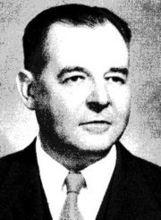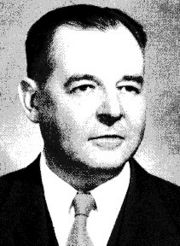主要貢獻
 哈羅德·霍特林
哈羅德·霍特林埃奇沃思模型的說明描述了只有兩個賣者的市場中的不穩定因素。霍特林在1929年對這一觀點提出挑戰;提出霍特林模型,他認為價格或產出的不穩定並非是寡頭壟斷的基本特徵。霍特林模型顯然是對埃奇沃思和伯特蘭的批評。霍特林不同意消費者由一個賣者突然轉向另一個賣者是市場的特徵這一觀點。他預期價格的下降實際上吸引不了多少消費者。因而他認為,只要消費者逐漸轉向競爭者,市場就仍將保持穩定。
1929年霍特林提出了空間競爭理論,把產品差異劃分為空間中直線段上的不同點,從而使產品差異具有可檢驗的經驗含意。其中有名的例子是霍特林的賣冰淇淋理論:在一平直的海灘上有兩個冰淇淋小販。假設二者的生產成本均為零,產品的質量都是一樣,顧客都平均分布線上型市場上,他們的品味均一致,他們對產品需求的價格彈性等於零,購買者都會從最近的供給者購買。
1931年哈羅德·霍特林發表了《可耗盡資源的經濟學》。這被認為是資源經濟學產生的標誌。
Harold Hotelling
Harold Hotelling's articles on econoimcs were few, but his contributions were profound enough to make him one of the "leaders" of the Paretian School, the "resurrectors" the Marginalist Revolution in the 1930s.
Hotelling's 1929 paper on the stability of competition introduced the notion of spatial competition in a duopoly situation. The solution to this problem was in fact an early statement of a very well-known game-theoretic solution concept: the subgame-perfect equilibrium (as later defined by Selten.). His 1929 paper on depreciation provided its modern definition as the decline in discounted future values. In 1931, he advanced another technique into economics, the calculus of variations, into a now famous analysis of resource exhaustion.
His 1932 piece reworked the theory of production into a choice-theoretic framework based on profit-maximization, setting the foundations of the modern Neoclassical approach. His 1935 derivation of demand was actually simultaneous with that of Hicks and Allen. His famous 1938 presidential address to the Econometric Society introduced the "marginal cost pricing" equilibrium as a general welfare proposition: roughly, that economic efficiency is achieved if every good is produced and priced at marginal cost. This would be the foundation of the Fundamental Welfare Theorems of Paretian general equilibrium theory. It was also here that he introduced his famous "two-part" tariff as an alternative solution in situations of natural monopoly.
Although appointed as a professor of economics at Columbia (oddly, one of the strongholds of the American Institutionalist school), one can argue that Harold Hotelling was a statistician first, economist second. His work in mathematical statistics included his famous 1931 paper on the Student's t distribution for hypothesis testing, in which he laid out what has since been called "confidence intervals". At Columbia, he ensured that the economics students under him were well immersed in statistical theory. He trained both Kenneth Arrow and Milton Friedman, and was instrumental in the appointment of Abraham Wald.
工作
"A General Mathematical Theory of Depreciation", 1925, Journal of ASA. "Differential Equations Subject to Error", 1927, Journal of ASA "Applications of the Theory of Error to the Interpretation of Trends", with H. Working, 1929, Journal of ASA. "Stability in Competition", 1929, EJ. "The Economics of Exhaustible Resources", 1931, JPE. "The Generalization of Student's Ratio", 1931, Annals of Mathematical Statistics. "Edgeworth's Taxation Paradox and the Nature of Supply and Demand Functions", 1932, JPE. "Analysis of a Complex of Statistical Variables with Principal Components",1933, J of Educational Psychology "Demand Functions with Limited Budgets", 1935, Econometrica. "Relation Between Two Sets of Variates", 1936, Biometrika. "The General Welfare in Relation to Problems of Taxation and of Railway and Utility Rates", 1938, Econometrica.
參考資料:
Kenneth J. Arrow, 1987, “Hotelling ,Harold" The New Palgrave: A Dictionary of Economics, v. 2, pp. 670–71.I. Olkina and A. R. Sampsonb (2001). "Hotelling, Harold (1895–1973)," International Encyclopedia of the Social & Behavioral Sciences, pp. 6921–6925. Abstract.


